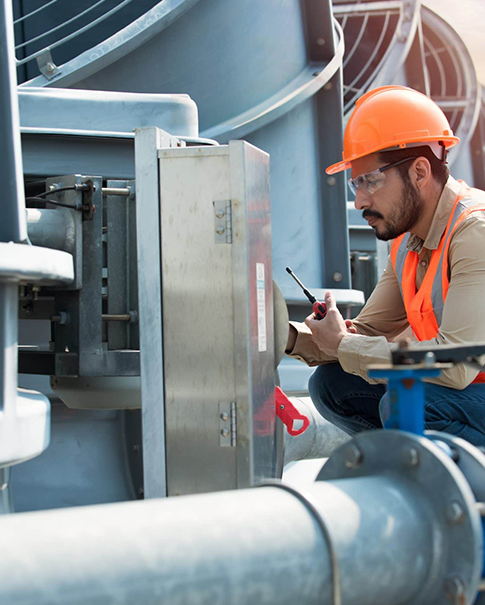How to choose an industrial chiller that suits your needs?
Jan 06, 2025
Choosing a chiller that suits your needs requires considering multiple factors. Here are some suggestions for purchasing a chiller:
1. Determine the cooling capacity of the chiller
Determine the cooling capacity of the required chiller based on actual needs. For example, factories, hospitals, etc. have high requirements for cooling capacity and need to choose chillers with larger cooling capacity, such as 200kw chillers, 500kw chillers, 1000kw chillers, 1500kw chillers, etc.; while some small injection molding equipment need to choose chillers with smaller cooling capacity. Such as 5ton chillers, 8ton chillers, 10ton chillers, etc. If you don’t know or are not sure how big an industrial chiller to buy, you can tell the application industry, equipment flow, inlet and outlet water temperature, ambient temperature, refrigerant type, voltage and other special requirements, such as pump flow, pressure requirements, explosion-proof requirements, etc. Hengde Company will recommend an industrial chiller that suits your company’s needs based on all your requirements.
2.Consider the brand and after-sales service of the chiller
The quality and after-sales service of well-known brands of chillers are better, which can ensure the long-term and stable operation of the equipment. At the same time, you should also understand the warranty period and maintenance policy of the chiller. Hengde Company has more than 15 years of experience in the chiller industry, passed ISO9001, CE, SGS and other certificates, and obtained 8 patent certificates. At the same time, Hengde Company has a complete pre-sales and after-sales system, providing 24-hour customer service. Free pre-sales consultation, technical and operation training, and on-site guidance on the installation and commissioning of the chiller according to the actual needs of customers, so that you have no worries.
3.Consider the installation conditions of the chiller
According to the place of use and environment, choose suitable chiller installation conditions, such as power supply, water source, ventilation conditions, etc. For some places with limited space or inconvenient water source, you can choose air-cooled chillers, which are easy to install and occupy a small area. For places with sufficient water source and high cooling requirements, you can choose water-cooled chillers, which generate relatively less noise during operation.
4.Consider the price of the chiller
When purchasing a chiller, price is an important consideration. You need to choose a cost-effective device based on your budget and actual needs. But price is not the only factor. The cost-effectiveness of the chiller needs to be comprehensively evaluated based on product quality, technical support and after-sales service.
5. Safety performance and maintenance convenience
Check whether the chiller has complete safety protection measures, such as high and low voltage protection, overload protection, leakage protection, etc. High and low voltage protection can prevent the compressor from being damaged under abnormal pressure, overload protection can prevent the motor from burning due to long-term overload, and leakage protection ensures the safety of the operator.
Choose a chiller that is easy to maintain. For example, the structural design of the equipment should be easy to disassemble and overhaul, and key components (such as compressors, water pumps, etc.) should be easily accessible. At the same time, the manufacturer should provide detailed maintenance manuals and technical support to facilitate users to perform daily maintenance and troubleshooting.
In short, when purchasing an industrial chiller, you need to consider the above factors comprehensively according to your actual needs and situation and choose the equipment that suits you. At the same time, pay attention to the maintenance and care of the equipment to ensure its long-term stable operation.
Choose Hengde, Choose Perfect Industrial Chillers!
